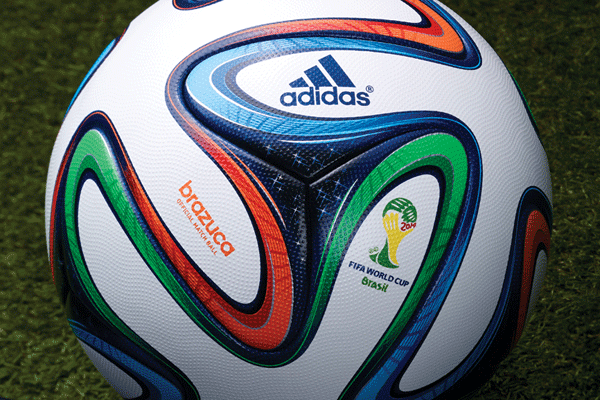
Adidas scores big with Brazuca
By PLANT STAFF
Industry Innovation & Technology Manufacturing Adidas InnovationWorld Cup match ball is a technological marvel.
There was a touch of irony when Germany’s Mario Gotze skilfully corralled a cross with his chest then sent a neatly placed volley past Argentinian goal keeper Sergio Romero in the 113th minute of the World Cup final July 13.
The irony of course (and maybe the stuff of Argentine soccer conspiracy theorists) is that the golden goal was scored with a soccer ball produced by German sporting goods giant Adidas called the Brazuca, a name taken from an informal local term for Brazilian and homage to the 2014 host country of the planet’s largest soccer tournament.
Perhaps more impressive than the tournament deciding goal is the amount of technology and innovation Adidas put into the ball’s design and performance. The company describes it as a breakthrough in innovation that features a revolutionary six-panel design and a unique pimpled surface to improve grip, touch, stability and aerodynamics.
It features the smallest number of panels of any ball in soccer history, with six identical propeller-shaped pieces of flexible plastic that are thermally bonded together to protect a sheet of foam that encases the air-filled inner bladder. Brazuca has a diameter of 69 centimetres and weighs 437 grams, which is on the higher side of FIFA’s 420 to 445 gram weight requirements, after testing revealed players preferred a heavier ball.
Adidas, which has been producing the official World Cup ball since 1970, says it spent more than two and a half years testing, which involved more than 600 world cup players and 30 teams in 10 countries.
But humans weren’t the only participants in the ball’s testing. Adidas employed robotic legs, wind tunnels, and shooting machines, part of a FIFA requirement that balls go through 2000 cycles in the shooter machines.
The extensive testing, the company says, is the result of a number of criticisms about the design of the Jabuliana ball in the 2010 World Cup South Africa, which moved, swerved and dipped unnaturally, wreaking havoc on strikers and goalkeepers, and was described by critics as a “beach ball.”
To avoid any “knuckling,” Adidas covered the Brazuca with thousands of small nubs, creating a rougher surface to improve touch and accuracy.
If the tournament’s deciding goal was any indication, the Brazuca lived up to expectations.

